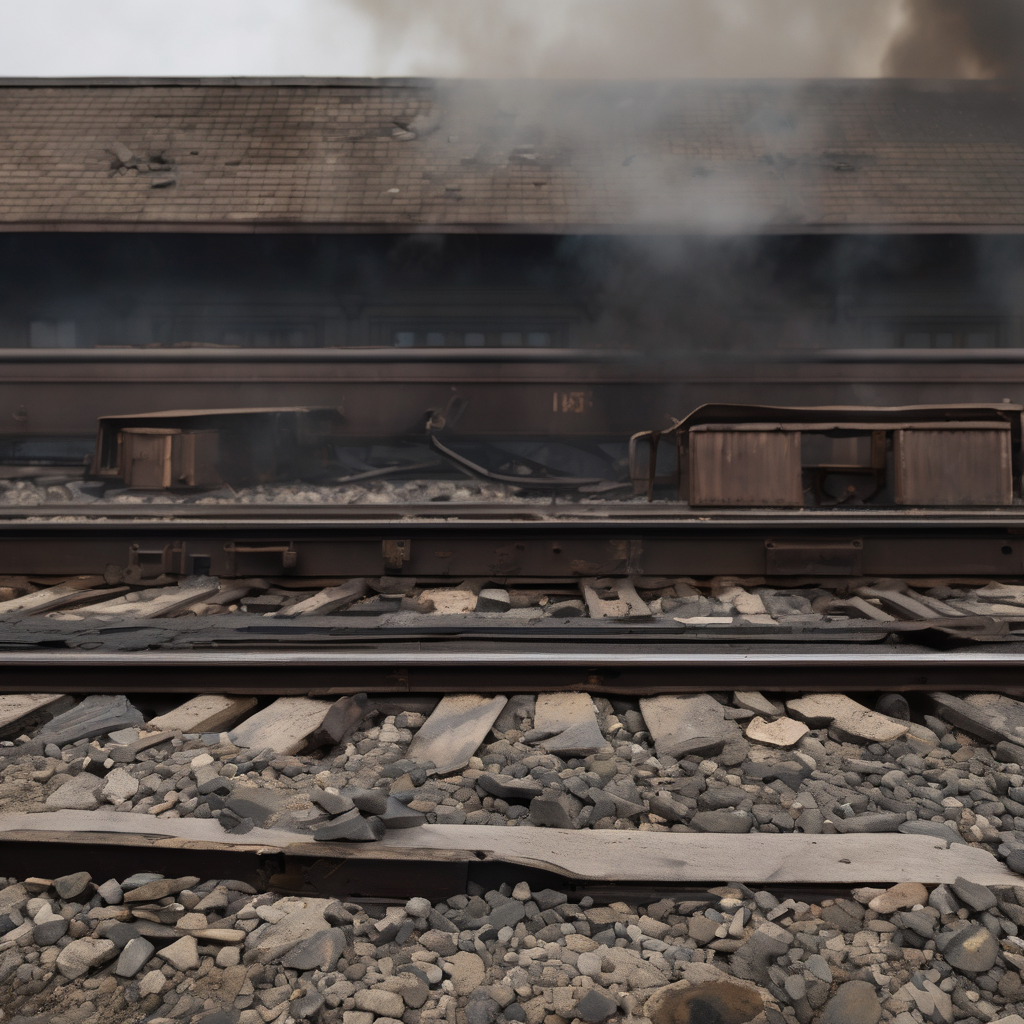Russia has intensified its attacks on Ukraine’s railway system, significantly impacting the nation’s vital infrastructure nearly three and a half years after the onset of the full-scale invasion. This escalation was starkly illustrated by the recent harrowing experience of train conductor Olha Zolotova, who was severely injured when her train was struck by a Russian drone. “When the Shahed [drone] hit, I was covered in rubble,” she recounted from her hospital bed in Kyiv, where she was transported for treatment after her injuries were deemed critical.
The incident occurred at a train station in Shostka, located in the northern Sumy region, underscoring a disturbing trend as attacks on Ukraine’s railways have surged. In September alone, reports indicated that there were twice as many attacks on railway infrastructure compared to August, with half of all strikes since the invasion occurring in the past two months. Deputy Minister Oleksiy Balesta highlighted that nearly every day, targeted attacks are damaging both freight and passenger train operations, with an alarming number of injuries among civilians and first responders.
Attacks on the rail network, which spans 21,000 kilometers and serves as a crucial lifeline for transporting goods and people, have been characterized as a deliberate strategy by Russia to disrupt supply lines. This focus on targeting railway infrastructure stems partly from the current stalemate on the frontline, leading the Russian forces to disrupt Ukraine’s transportation capabilities.
Ukraine’s rail operator, Ukrzaliznytsia (UZ), is implementing measures to mitigate the damage, including rapid repairs and staff training to recognize sabotage threats. The importance of maintaining train services, even under threat, is paramount for the morale of passengers. For example, a passenger whose train route was extended by six hours due to safety concerns received flowers and a cake from UZ staff to celebrate her birthday while she was on board.
The railway network not only enables essential supplies, such as grain and iron ore, to reach the pivotal Black Sea ports for export but also allows political leaders from around the world to visit Ukraine by train—a gesture that has been dubbed “iron diplomacy” by the locals. Despite the persistent danger from missiles and drones, the Ukrainian railway system remains a symbol of resilience for the nation, with the workers involved in maintaining it being honored as “iron heroes.” Their steadfastness reflects a spirit of determination against adversity as the battle for the railways continues amidst ongoing conflict.
